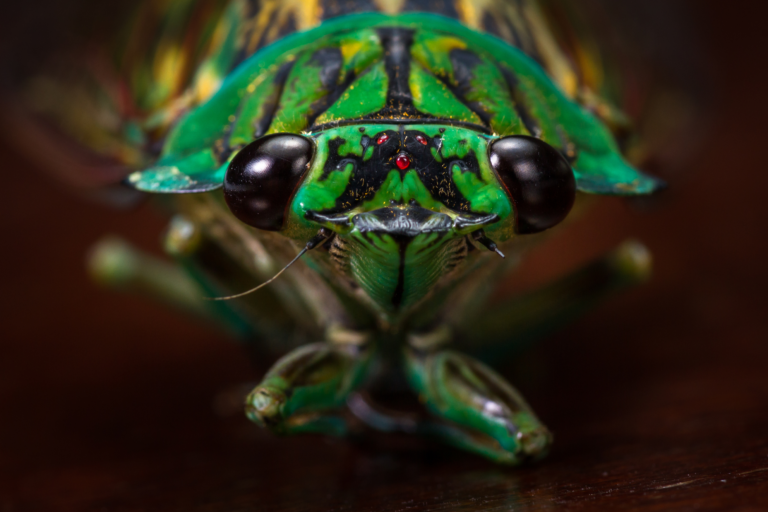
Cicadas are big, green and gross. They fly, have giant eyes and make loud clicking noises. (A male swarm of these insects can produce noise at over 100 dB!) Oh, and they are often seen in large groups – like by the millions. If you think this sounds like a nightmare or a beginning of a cheesy horror movie, you wouldn’t necessarily be wrong. However, cicadas are harmless and essentially only survive as a species because of their sheer numbers and weird life-cycle which has ensured that no predator has evolved to specifically depend on them as a food source. Here’s a brief primer on the very fascinating, bizarre world of the cicada.
There are two general types of cicadas in terms of their life cycles, and about 3000 species of the insect in total. The much less talked about annual, or “dogday,” cicadas emerge basically every late summer. While some annual species of cicadas do have multi-year life cycles, overlapping generation of adults makes it so they appear yearly. These type are known for their large wings, green bodies, brown eyes, distinctive clicking or humming noise that is sometimes called the “song of the summer.” Others say it sounds like a rusty chainsaw cutting through a tree trunk. These types of cicadas appear all across America, from the Southwest to the Mid-Atlantic region.
But it’s the periodical cicadas that are really fascinating. That’s because they emerge only every 13 or 17 years (depending on the brood, which we will get to in a moment), making them one of the longest-living insects on Earth. They come out by the millions and often overwhelm trees and fields – leading some to speculate that they are the biblically-referenced locusts. (This seems unlikely for a variety of reasons, however.)
Periodical cicadas are separated by broods- a way to categorize the insects based on their life cycle.
As of right now, entomologists recognize 30 different broods, but that number can vary as broods die out and new ones emerge. Broods I through XVII are primarily based in the northeastern United States and have life cycles of 17 years. Broods XVIII through XXX live in the southern part of the country and their life cycles are slightly shorter at 13 years.When emerging, the different broods can sometimes overlap, creating dense clouds of cicadas that some scientists actually think is a survival technique. Since cicadas are completely harmless to animals and humans (even to eat), their high numbers all at once prevents total annihilation. Even if birds (or the occasional human) gobbles up thousands of cicadas, there are plenty more around.
On top of that, there’s a belief that their prime number (13 & 17) life cycles also provide some level of protection. As far as anyone knows, there’s no predator that’s specifically evolved to prey on the North American periodical cicada. Their life cycles are simply too irregular for any creature to depend on them as a food source. So when they come out en masse, it just means a better year for food for a lot of insect eating animals (and potentially a bad year for many trees), but also that there won’t be so many predators around as to put too much of a dent in the cicada numbers.
In any event, Cicadas begin their life as a grain-of-rice-shaped egg on a tree branch, deposited there by their mother. Creating a groove using the…
The post The Bizarre World of Cicadas appeared first on FeedBox.